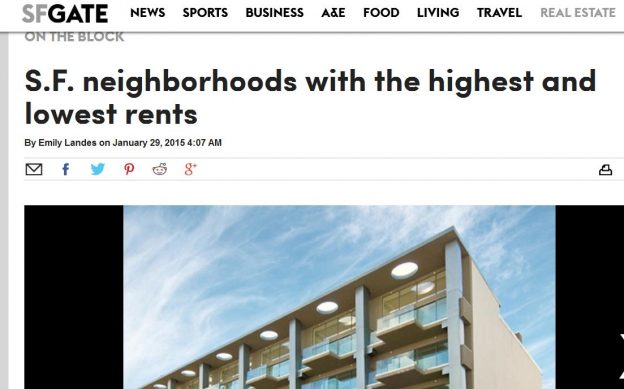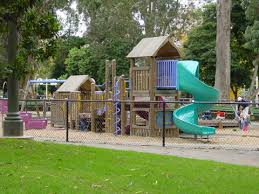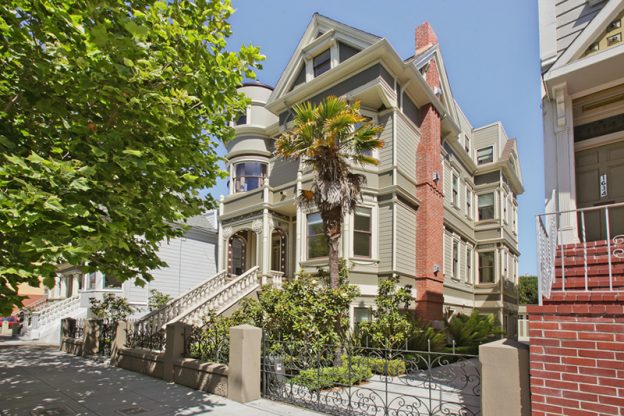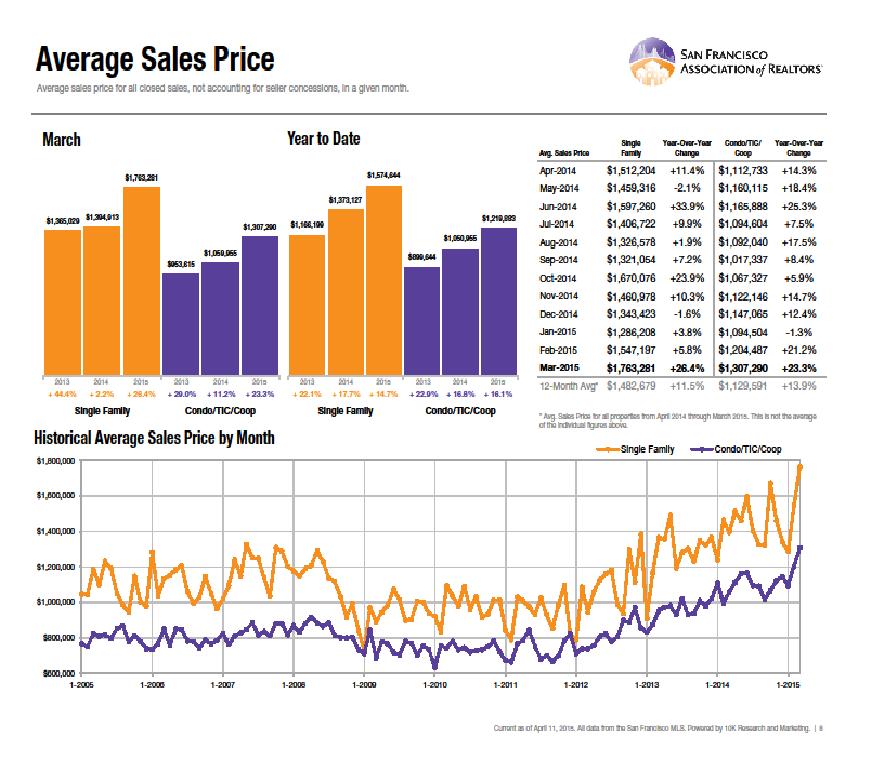The San Francisco market data for March 2015 is here.
Author Archives: Pota Perimenis
The 7 Best Neighborhoods in San Francisco: 2015 Edition
What are the 7 best neighborhoods in San Francisco in 2015?
Is my guess as good as Zillow’s? Or, who should we trust to help us make good real estate decisions?
Is my guess as good as Zillow’s?
– Who should we trust to help us make good real estate decisions?
As a Realtor in San Francisco for almost 25 years, I’ve observed with interest how the digital revolution impacts the real estate industry (e.g. Zillow/Trulia), as it has the hotel industry (e.g. AirBnB), retail (e.g. Alibaba) and the transportation industry (e.g. Uber and Lyft). Just as Uber owns no vehicles, Alibaba has no inventory, AirBnB owns no real estate, Zillow/Trulia have never sold a house.
Given Zillow and Trulia’s basis in the virtual world, can consumers trust the accuracy of the information presented to them on these sites? Most of the time, the answer is “no”.
Here is a typical example from Zillow’s popular Zestimate, referred to by so many buyers and sellers when valuing properties.
536 Moraga Street, San Francisco, CA
Zestimate: $1,269,361
Actual sales price: $2,500,000
Zestimate off by $1,230,639 or 51%
Property completely renovated since previous sale, not reflected in Zestimate.
The estimate was off by 51%! Relying solely on the data and the algorithms contained in these sites can actually be detrimental to a consumer making real estate decisions. There is misinformation and just too many inaccuracies. The information cannot stand on in its own. It must be interpreted and analyzed by a professional in order to help you make smart real estate choices.
My advice for consumers is to use the resources provided by the Internet, but to understand their limitations. The gap they leave is filled by the resource that Realtors provide.
Realtors help separate fact from fiction in the real estate world, providing the accuracy their clients need. Keep in mind that the value-add of the Realtor is not so much MLS access but turning that real estate information into knowledge. Knowledge is the market know-how acquired through training and through experience to interpret the information.
To understand the real estate industry, let’s go back a bit to see how the past has shaped the present.
To do this, we need three letters: MLS (Multiple Listing Service). The MLS is the system of gathering and sharing listing information by Brokers. A Listing Broker makes listings known to all other brokers using the MLS and shares the sales commission with the Buyer’s agent. The MLS has been around for more than a century, providing a collaborative incentive for brokers to share listing information to the benefit of broker, clients, customers, and the public at large.
Before technology, Realtors advertised their listings by holding signs on the side of the road. Later, the MLS came out in print every two weeks. It was the1990s before listings were put into the computerized database for the first time here in San Francisco.
Today the MLS is shared by Realtors with the public using a system called IDX (Internet Data Exchange). This is a real estate search site that allows the public access to part of the MLS that is deemed “publicly accessible.” Also, there are other sections of the MLS that have information that only Realtors can access.
With access to the MLS, buyers and sellers are now empowered, knowing what is on the market, and what has sold. The relationship between Realtor and client is more collaborative and transparent. They now work as a team in an ever-more competitive market to achieve the real estate goals before them.
Enter Zillow/Trulia (recently merged into the Zillow Group, referred to as Zillow). Known as “real estate aggregators,” they are online real estate database companies. They present real estate information to the public on their sites, and have reported almost 137 million unique users. Their income last year was reported as almost $344 million. I would call Realtors and Zillow “frenemies”. Ironically Zillow’s main source of income is from Realtors, who buy leads and ads from the site.
It’s an interesting business model. Zillow has never listed or sold a home and they say they never plan to. They depend on Realtors providing free content and then selling leads to this content back to Realtors looking for new business.
Zillow Group is doing well, as are the Realtors who benefit from the leads. But what about the consumer? Zillow does not have full MLS access to populate its data. Without full MLS access the Zillow information relies heavily on having individual Realtors manually input their listings on to the site, and on public records to provide sales information. As a result the listings are not always up-to-date, comprehensive, or accurate.
What about the Zestimate?
It is based on this incomplete data that Zillow provides something called “Zestimate” on its website, an automated tool that estimates a property’s value. Put in an address and the algorithm calculates the value of the home, sight unseen.
This is where it gets tricky for buyers and sellers. People often want to know what their home is worth without having to contact a Realtor to do a market analysis. However, every property is unique, and every buyer and seller situation is also unique. Convenient as it is, there is no way the Zestimate algorithm can quantify these unique variables, which makes the Zestimate, for the most part, inaccurate.
To illustrate, here are a couple more Zestimates comparing the estimate to the actual sales price:
3566 17th Street, San Francisco, CA
Z estimate: $1,191,058.
Actual sales price: $1,400,000
Zestimate off by $208,942 or 15%.
Property still shows as available but is already sold.
75 Caire Terrace, San Francisco, CA
Zestimate: $893,124
Actual sales price: $699,000
Zestimate off by $194,124 or 28%
Property still shows as available but is already sold.
Inaccurate data creates buyer and seller perceptions of real estate values that are not in sync with the real world. When the time comes to actually buy or sell, the buyers and sellers with a better read on the market will have an advantage.
What is my advice to buyers and sellers who want a competitive edge?
Combine the virtual world convenience of Zillow with the real world knowledge offered by a well-chosen Realtor.
Realtors work in the physical real estate world, not the digital real estate world. When I do a market analysis of a property, I do a careful, physical walkthrough and assessment of the property’s condition. I have personally seen the interior of most of the homes which are comparables so I can accurately compare the properties. I use my experience and the resources of the real estate community to create knowledge from the information I gather and the specific questions I ask. The final analysis is custom and unique to the property I’m analyzing, and not just a “hunch.” It takes hours of labor, years of experience, and analysis of the current market to know just what to focus on and how to interpret the information.
I take my job very seriously. I understand fully that the Seller is hiring me to get them the highest price and most favorable terms and to make sure they comply with disclosure requirements and local ordinances. The Seller trusts me with one of the most important investments they have. I give them my loyalty and all my skills to achieve their goals.
Realtors advocate for their clients. Do real estate sites really care if a buyer is successful in their house hunt or a seller gets the most money possible for their house? Of course not. They are selling advertising. Realtors however, do care, as it is both in their best interests and their clients’ to achieve their clients’ goals. Good Realtors are loyal, team players experienced in the art of making the deal so that everyone wins.
Realtors can maintain a pulse on the ever-changing dynamics of the marketplace. Algorithms cannot.
How to win at real estate?
Combine Internet information with the services of a Realtor. But don’t just “click” on a Realtor. Deliberately choose a Realtor. Use the same criteria as if you were choosing a dentist or a doctor. Choose a Realtor who cares about you and has the knowledge to best help you. Choose someone you can relate to, who is competent, works hard, is loyal and is looking out for your best interests. That person should be your team member. Together you will succeed. Real estate always has been and always will be a people business.

Springtime in the North Panhandle of San Francisco (NoPa)
San Francisco Market Focus for February 2015
San Francisco Market Statistics February 2015
San Francisco Market Focus for February 2015 | San Francisco Real Estate Statistics
New Listings were down 2.6 percent for single family homes and 21.1 percent
for Condo/TIC/Coop properties. Pending Sales decreased 18.2 percent for
single family homes and 14.7 percent for Condo/TIC/Coop properties.
The Median Sales Price was up 6.2 percent to $1,115,000 for single family
homes and 17.4 percent to $1,100,000 for Condo/TIC/Coop properties. Months
Supply of Inventory decreased 13.3 percent for single family units and 23.5
percent for Condo/TIC/Coop units.
For the full report click here: San Francisco Market Statistics February 2015

Springtime in the North Panhandle of San Francisco | Presented by NoPa real estate expert Pota Perimenis
Springtime in the North Panhandle of San Francisco | Presented by NoPa real estate expert Pota Perimenis
Walking on Grove Street the other day, my senses were treated to the sight and the aroma of a whole street of cherry trees in full bloom. Just a couple of days later the leaves were starting to form and the blooms floated away in the breeze. Springtime in the city…beautiful, intense and fleeting at the same time.

San Francisco Short Term Rental Ordinance goes into effect
San Francisco Short Term Rental Ordinance goes into effect
Effective February 1, 2014, property owners and tenants who plan to rent their unit (or portion of their unit) on sites like Airbnb will need to have their property added to SF’s Short-Term Rental Registry.
For more information on the ordinance, including access to the application and how to schedule an appointment, click here.
From the city’s website:
What is the SF Short-Term Residential Rental Ordinance?
On October 27th, 2014 Mayor Lee signed San Francisco Ordinance No. 218-14, amending the Administrative and Planning Codes to allow some residential properties to conduct short-term residential rentals without violating the requirements of the City’s Residential Unit Conversion and Demolition Ordinance (Administrative Code Chapter 41A) or the Planning Code. A short-term residential rental is a rental of all or a portion of your residential unit for periods of less than 30 nights. This law will become effective on February 1st, 2015. At that time, eligible Permanent Residents (owners and tenants) will be able to apply to place their residential unit on the Planning Department’s Short-Term Residential Rental Registry.
What can I do with a Short-Term Residential Rental Registration?
With a valid Short-Term Residential Rental Registration you may rent your primary residential unit for periods of less than 30 nights without violating the requirements of the City’s Residential Unit Conversion and Demolition Ordinance (Administrative Code Chapter 41A) or the Planning Code. This includes renting a portion or your entire unit while you are also present for an unlimited number of nights per year and renting a portion or your entire unit while you are not present for a maximum of 90 nights per year.
How can I apply to be on the Registry?
Short-Term Residential Rental Applications will be made available online and at the Planning Information Center (PIC) located at the ground floor of 1660 Mission Street. To register your unit, you will need to make an appointment with the San Francisco Planning Department to meet with staff and submit your application. Applications must be filed in person by the permanent resident whose name will appear on the registry. Applications may not be filed by representatives or agents. Drop-ins or dropped off applications will not be accepted. The Planning Department will begin conducting intake appointments on Monday, February 2nd. To schedule an intake appointment, please call 415-575-9179 after Monday, January 26th.
You may not rent your unit (in all or a portion) as a short-term residential rental until you have received a Short-Term Residential Rental Registration number from the Planning Department.
Who is eligible to register?
In order to conduct a short-term residential rental you must meet all of the following conditions:
- You must be the Permanent Resident (owner or tenant) of the residential unit that you wish to rent short-term. This means you must live in that specific residential unit for at least 275 nights of any given calendar year. If you are a new resident you must have occupied this specific unit for at least 60 consecutive days prior to your application. If you own a multi-unit building, you may only register the specific residential unit in which you reside.
- You must obtain a San Francisco Business Registration Certificate from the San Francisco Treasurer and Tax Collector’s Office.
- You must obtain liability insurance in the amount of no less than $500,000 or provide proof that liability coverage in an equal or higher amount is being provided by any and all hosting platforms through which you will rent your unit.
- Your residential unit must not have any outstanding Planning, Building, Housing, Fire, Health, Police, or other applicable City code violations.
- You may only register one residential unit.
- Please note that residential units that are subject to the Inclusionary Affordable Housing Program and residential units designated as below market rate (BMR) or income-restricted under City, state, or federal law are not eligible to register.
- Important note for tenants: The Planning Department strongly recommends that you review your lease before submitting an application. The registration of your residential unit on the Short-Term Residential Rental Registry does not override any lease agreements, homeowner’s association bylaws, Covenants, Conditions & Restrictions (CC&Rs), or any other agreement, law, or regulations that prohibit subletting or use of your unit as a short-term residential rental.
Is there an application fee?
Yes. The fee for the initial application is $50.00. Your registration will remain valid for two years (pending the registered unit remains in good standing)
At your appointment you will need to provide all of the following items:
- A completed Short-Term Residential Rental Application (download application packet here)
- A Business Registration Certificate issued by the San Francisco Treasurer and Tax Collector’s Office
- Driver’s License or State Issued ID Card issued at least 60 days prior to the short-term residential rental application date and valid for at least the next 6 months, with address of the registered unit
- Proof of liability insurance in the amount of no less than $500,000
- A signed affidavit agreeing to abide by all conditions of the short-term residential rental ordinance included within the application (download application packet here).
- A check made out to the San Francisco Planning Department for $50.00
- At least two of the following listed documents to confirm your primary residency at your residential unit:
- Proof of a Homeowner’s Tax Exemption. Accepted as a form of residency confirmation only if the proof of a Homeowner’s Tax Exemption is for a property that is either a single-family dwelling or condominium;
- Voter Registration Card or Certificate with the address on the application, issued at least 60 days prior to the short-term residential rental application date. You may obtain a copy through the San Francisco Department of Elections;
- Proof of Vehicle Registration with the address on the application, issued at least 60 days prior to the short-term residential rental application date;
- Proof of car insurance, showing address of registration, issued at least 60 days prior;
- Original utility bill, issued by a public utility or PG&E, at least 60 days prior to the short-term residential application date. Copies and printouts will not be accepted. You may only use utility bills as one form of residency confirmation. Cable, cell phone, and internet bills do not qualify.
If you are a tenant of your residential unit you will also need to provide a copy of your lease or rental agreement. Please note that upon receipt of your completed application, the Planning Department will send a notice to the owner(s) of your unit, informing the owner(s) that your application has been received.
What will happen at my intake appointment?
Staff will review your application and related materials for completeness and intake. Only applications deemed complete at the time of submittal will be accepted for intake and further review. Additionally, staff will go over conditions and limitations of renting your unit as a short-term rental.
What happens after I’ve submitted my application?
It is expected that the Planning Department will review a completed application within fifteen (15) business days. If the Planning Department determines that your application meets the criteria then your unit will be added to the Short-Term Residential Rental Registry. You will you receive a “Short-Term Residential Rental” certificate by mail, which contains your assigned Registration Number. This registration number must be included at the top of all short-term rental listings’ descriptions (online or otherwise). We recommend that you place this certificate in plain view within your unit.
What can I do and not do once I have obtained a Short-Term Residential Rental Registration Number?
Once you have obtained a Short-Term Residential Rental Registration Number, you may use your residential unit as a short-term residential rental without violating Administrative Code Chapter 41A or the Planning Code under the following conditions:
- You may rent the residential unit (in all or a portion) while you are not present for a maximum of 90 nights per calendar year.
- You may rent a portion of the residential unit while you are present for an unlimited number of nights per year.
- You may advertise your residential unit on any and all hosting platforms under the condition that you list your registration number at the top of all listings’ descriptions.
What you may not do with your Primary Residence registered as a Short-Term Residential Rental:
- You may not rent your residential unit or a portion thereof for more than 90 nights per calendar year while you are not also present during the time of the guests’ stay.
- You may not rent illegal residential units or unpermitted spaces associated with your property.
- If you are a tenant, you may not make more than your monthly rent from your short-term rental fees charged to guests.

NOPA rents some of the highest in San Francisco | NOPA real estate trends
NOPA rents some of the highest in San Francsico | NOPA real estate trends
San Francisco’s median rent was a whopping $3,500 a month in the fourth quarter of 2014, according to leasing site LiveLovely.com, the highest in the nation. The median is up only $12 from the third quarter, but is $250 more than one year ago. Of course, this median is based on citywide rents for all apartment sizes and types in the city. When you break apartment rents down by neighborhood, that already high price can go soaring even higher.
http://blog.sfgate.com/ontheblock/2015/01/29/s-f-neighborhoods-with-the-highest-and-lowest-rents/

NOPA Neighborhood News: Panhandle Playground Selected for Renovation
NOPA Neighborhood News: Panhandle Playground Selected for Renovation
According to Supervisor London Breed:
Last month, Mayor Ed Lee announced the six playgrounds throughout the City that will be completely renovated with funds from the voter-approved 2012 San Francisco Clean and Safe Neighborhood Parks Bond. The Panhandle Playground was selected as a priority by a task force convened by the Recreation and Park Department that included community leaders, child services providers, parks advocates and young people.
Back in 2012, voters enthusiastically supported the Bond (72% voting in favor) giving the Recreation and Park Department $195 million to continue capital projects for the renewal and repair of the City’s parks, recreation, and open spaces.
Click here for her newsletter: London Breed’s Newsletter

NOPA real estate sales: Upper NOPA real estate year in review
Upper NOPA Real Estate Year in Review 2014
NoPa fast facts: median prices as of December, 2014
Single family: $1,729,000 /median $4,995,000/high $ 950,000/low
Condominium: $ 962,500 /median $1,800,000/high $ 335,000/low
2-4 Unit: $ 1,747,500/median $2,400,000/high $1,050,000/low













